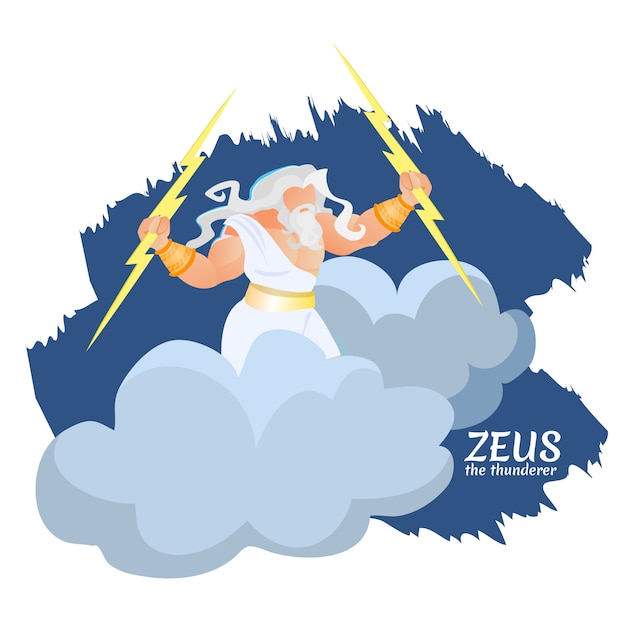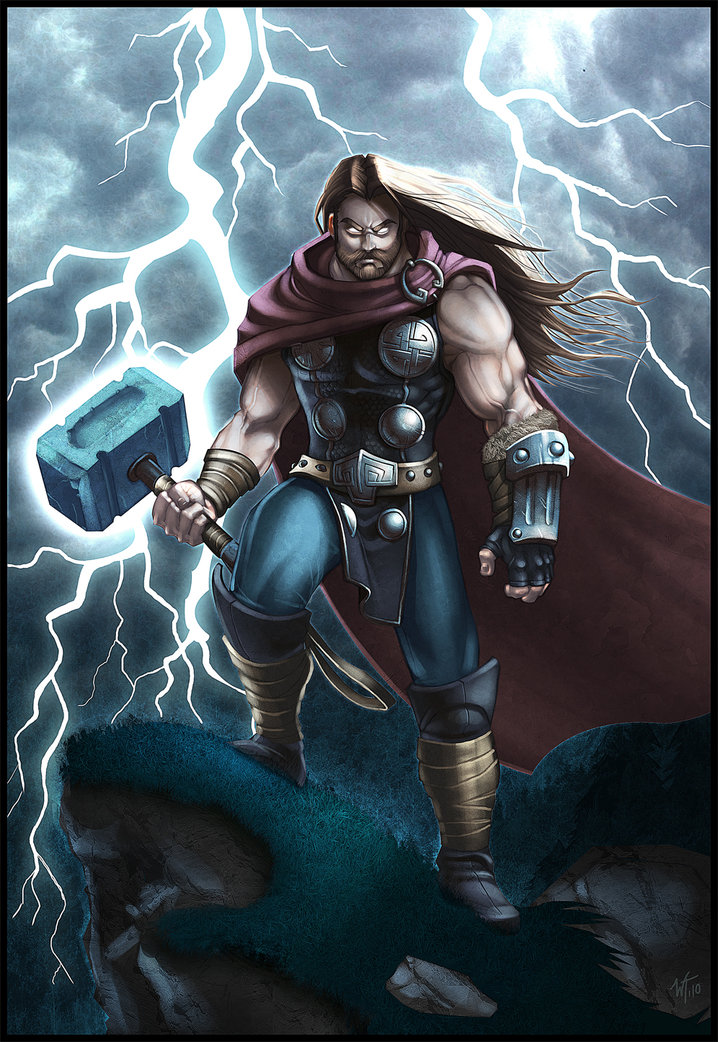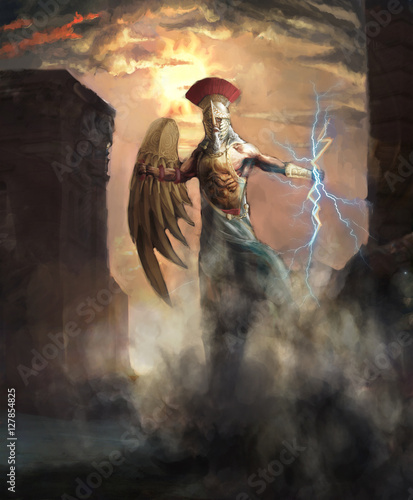- Greek God Of Thunder Crossword Clue
- Greek God Of Thunder Zeus // Cast Statue
- Thor Greek God Of Thunder
- Greek God Thunderbird
Apr 02, 2018 The god of Thunder Zeus is the sky and thunder god in ancient Greek religion and mythology, who rules as king of the gods of Mount Olympus.
- Stemming from the northern Germanic tradition, the mythology of the Norse is by design both grim and grand. It is the mythology not just of a people with a strong warrior culture, but of a people who found great joy in art and in crafts. It is a mythology of people who explored, who survived.
- Jun 22, 2018 Today we take a look at a much requested Norse God, Thor the mighty God of thunder. If you have enjoyed this video, please leave a like as it helps a lot. SUBSCRIBE FOR MORE VIDEOS!
Raijin (雷神), also known as Yakusa no ikazuchi no kami, Kaminari-sama, and Raiden-sama, is a god of lightning, thunder and storms in Japanese mythology and the Shinto religion. The name 'Raijin' is derived from the Japanese words kaminari (雷, meaning thunder) and kami (神, meaning god). Raijin is typically depicted with fierce and aggressive facial expressions, standing atop a cloud, and is shown beating on drums. The drums are often shown to have the symbol tomoe drawn on them. Raijin is often depicted as a protector and/or warrior figure within Japanese temples and shrines.
- 2Mythology

Description[edit]
Raijin is often depicted with a fierce, frightening face and a muscular figure with gravity-defying hair. He is surrounded by Taiko drums that he plays to create the sound of thunder. Raijin holds large hammers in his hands that he uses to play the drums. In some cases, Raijin is portrayed with three fingers which are said to represent the past, present and future. Two of the most notable sculptures of Raijin are located in the Sanjusangendo temple and the Taiyuin Rinnoji temple.
Raijin and Fujin reside side by side in the Kaminarimon gate that guards the entrance to the Sanjusangendo temple. These sculptures are made of wood with lacquer, gold leaf and paint along with crystal, inlaid eyes. The Raijin and Fujin sculptures in Sanjusangendo are considered national treasures.
In the Taiyuin Rinnoji temple, Raijin and Fujin are located in the Niten-mon gate. They are made of wood with paint and are seen with their token talismans, Raijin's drums and Fujin's wind bag[1].
Mythology[edit]
Raijin was born from the divine pair Izanagi and Izanami after Japan was first created. Raijin came from Izanami's corpse when she was in Yomi, the land of darkness[2]. Izanami later sent Raijin and several female demons to chase after Izanagi, after he fled the image of her rotting form, to bring him back to Yomi[3]. Raijin has many siblings, most notably, Fujin (the god of wind), Kagutsuchi (the god of fire), Susanoo (the god of the sea and storms), and Amaterasu (the goddess of the sun).
Raijin is also often seen in the company of his brother, Fujin, and his son, Raitaro[4]. He is often seen fighting with Fujin, mending his drums, or causing mischief. He is also shown in the company of Raiju, a thunder-beast or thunder demon.
Prayers to Raijin were mainly based upon agriculture as it was believed that rice that was struck by lightning would produce the best harvest.
Legends[edit]
In one legend, Raijin is shown to defend Japan against the invading Mongols. In this legend, the Mongols are driven off by a vicious storm in which Raijin is in the clouds throwing lightning and arrows at the invaders[5].
Another legend depicts how a man named Sugaru (nicknamed the God-catcher) was ordered to catch the Thunder God Raijin and deliver him to the Emperor in order to stop a storm. Sugaru commands Raijin to cease the storm in the name of the Emperor but to no avail. Sugaru prayed to Kannon who later delivered Raijin to him. Sugaru then tied him up in a sack and took him to the Emperor[6].
Modern role[edit]
Some Japanese parents tell their children to hide their belly buttons during thunderstorms so that Raijin doesn't take them away and eat them.
Raijin also appears in the kabuki play Narukami, in which he is imprisoned under a pool of water, thus causing a drought.[7]
See also[edit]
- Leigong (Chinese), god of thunder
- Leizi (Chinese), goddess of lightning
- Parjanya (Hindu), god of rain, thunder and lightning
- Sanjūsangendō (Japanese Temple)
- Izanagi (Japanese), part of divine pair of creation deities
- Izanami (Japanese), part of divine pair of creation deities
- Fujin (Japanese), god of wind
References[edit]
- ^Pier, Garrett Chatfield (1914). Temple Treasures of Japan. F.F. Sherman.
- ^'THE KOJ-IKI'. www.sacred-texts.com. Retrieved 2019-04-07.
- ^'THE KOJ-IKI'. www.sacred-texts.com. Retrieved 2019-03-29.
- ^Joly, Henri L. (1908). Legend in Japanese Art: A Description of Historical Episodes, Legendary Characters, Folk-lore, Myths, Religious Symbolism, Illustrated in the Arts of Old Japan. John Lane.
- ^Joly, Henri L. (1908). Legend in Japanese Art: A Description of Historical Episodes, Legendary Characters, Folk-lore, Myths, Religious Symbolism, Illustrated in the Arts of Old Japan. John Lane.
- ^Joly, Henri L. (1908). Legend in Japanese Art: A Description of Historical Episodes, Legendary Characters, Folk-lore, Myths, Religious Symbolism, Illustrated in the Arts of Old Japan. John Lane.
- ^'May at the Kabukiza Theatre|Theatres'. KABUKI WEB. Retrieved 2019-04-07.
External links[edit]
| Wikimedia Commons has media related to Thunder deities. |
- Netsuke: masterpieces from the Metropolitan Museum of Art, an exhibition catalog from The Metropolitan Museum of Art (fully available online as PDF), which contains many representations of Raijin
Greek God Of Thunder Crossword Clue

Polytheistic peoples of many cultures have postulated a thunder god, the personification or source of the forces of thunder and lightning; a lightning god does not have a typical depiction, and will vary based on the culture. In Indo-European cultures, the thunder god is frequently known as the chief or King of the Gods, e.g. Indra in Hinduism, Zeus in Greek mythology, and Perun in ancient Slavic religion.
- 1Thunder Gods
Thunder Gods[edit]
Mediterranean[edit]
- Teshub (Hurrian mythology)
- Adad, Bel, Ishkur, Marduk (Babylonian-Assyrian mythology)
- Baʿal, Hadad (Canaanite and Phoenician mythology)
- Set (Egyptian mythology)
- Aplu (Hurrian mythology)
- Tarḫunna (Hittite mythology)
- Tarḫunz (Luwian mythology)
- Vahagn (Armenian Mythology)
- Zibelthiurdos (Thracian mythology)
- Zeus (Greek Mythology)
- Restal (Renon Mythology)
Northwestern Eurasia[edit]
- Afi (Abkhaz Mythology)
- Ambisagrus, Loucetios (Gaulish mythology)
- Atämshkai (Moksha mythology)
- Gebeleizis (Dacian mythology)
- Horagalles (Sami mythology)
- Jupiter, Summanus (Roman mythology)
- Orko (Basque mythology)
- Perëndi (Albanian mythology)
- Perkūnas (Baltic mythology)
- Perkwunos (Proto-Indo-European mythology)
- Perun (Slavic mythology)
- Ukko or Perkele (Finnish mythology)
- Taranis (Pan-Celtic)
- Tharapita or Taara (Estonian mythology)
- Thor (Norse mythology)
- Brontes (Greek mythology)
- Fulgora (Roman mythology)
- Astrape and Bronte (Greek mythology)
- Thunor (Anglo Saxon)
East Asia[edit]
- Leigong (Chinese mythology)
- Dianmu (Chinese mythology)
- Ajisukitakahikone (Japanese mythology)
- Raijin (Japanese mythology)
- Tenjin (Japanese mythology)
- Susanoo (Japanese mythology)
- Takemikazuchi (Japanese mythology)
South Asia[edit]
- Indra (Hindu mythology and Buddhist mythology)
- Parjanya (Hindu mythology)
- Raja Indainda (Batak mythology)
- Vajrapani (Buddhist mythology)
Americas[edit]
- Thunderbird (Iroquois and Huron mythology)
- Aktzin (Totonac mythology)
- Haokah (Lakota mythology)
- Xolotl and Tlaloc (Aztec mythology)
- Cocijo (Zapotec mythology)
- Chaac (Maya mythology)
- Yopaat (Maya mythology)
- Chibchacum (Muisca mythology)
- Apocatequil (Incan mythology)
- Tupã (Guaraní mythology)
Sub-Saharan Africa[edit]
- Shango (god of thunder and lightning, Yoruba Nigeria)
- Oya (goddess of hurricanes, storms, death and rebirth, consort of Shango in Yoruba religion)
- Azaka-Tonnerre (West African Vodun/Haitian Vodou)
- Xevioso (alternately: Xewioso, Heviosso. Thunder god of the So region)
- Amadioha (Igbo, Nigeria)
- Àlamei (So region)
- Kiwanuka (god of thunder and lightning, Buganda, Uganda)
- Umvelinqangi (god of thunder, earthquake, sun and sky in Zulu mythology)
Oceania[edit]
- Haikili (Polynesian mythology)
- Tāwhaki (Polynesian mythology)
- Kaha'i (Polynesian mythology)
- Te Uira (Polynesian mythology)
- Nan Sapwe (Pohnpeian mythology)
Australia[edit]
- Mamaragan (Aboriginal mythology)
Greek God Of Thunder Zeus // Cast Statue
New Zealand[edit]

- Whaitiri (Māori mythology)
- Tāwhirimātea (Māori mythology)
In literature[edit]
The Hindu God Indra was the chief deity and at his prime during the Vedic period, where he was considered to be the supreme God.[1][2] Indra was initially recorded in the Rigveda, the first of the religious scriptures that comprise the Vedas.[3] Indra continued to play a prominent role throughout the evolution of Hinduism and played a pivotal role in the two Sanskrit epics that comprise the Itihasas, appearing in both the Ramayana and Mahabharata. Although the importance of Indra has since been subsided in favor of other Gods in contemporary Hinduism, he is still venerated and worshipped.
In Greek mythology, the Elysian Fields, or the Elysian Plains, was the final resting places of the souls of the heroic and the virtuous, evolved from a designation of a place or person struck by lightning, enelysion, enelysios.[4] This could be a reference to Zeus, the god of lightning, so 'lightning-struck' could be saying that the person was blessed (struck) by Zeus (/lightning/fortune). Egyptologist Jan Assmann has also suggested that Greek Elysion may have instead been derived from the Egyptian term ialu (older iaru), meaning 'reeds,' with specific reference to the 'Reed fields' (Egyptian: sekhet iaru / ialu), a paradisiacal land of plenty where the dead hoped to spend eternity.[5]
- H. Munro Chadwick, The Oak and the Thunder-God, Journal of the Anthropological Institute of Great Britain and Ireland (1900).
Thor Greek God Of Thunder
Music[edit]
- Gene Simmons of KISS's title song is 'God of Thunder', regarding his 'Demon' onstage persona.
- Rick Allen of Def Leppard was first referred to as the 'Thunder God' by Joe Elliott, the lead singer, during the first concert of the Hysteria World Tour.
- In June 2019, Eagles Of Death Metal released their electrifying rendition of KISS’s “God Of Thunder”.
Video games[edit]
- Orlanth (King of Dragon Pass)
- Raijin (Smite)
- Chaac (Smite)
- Zeus (Smite)
- Thor (Smite)
- Susano (Smite)
- Zapdos (Pokémon)
- Raikou (Pokémon)
- Karana (Everquest)
- Phosphora (Kid Icarus: Uprising), although she is not a goddess but a heavenly warrior in the service of Viridi
- Ishtar (Fire Emblem), given the title of Goddess of Thunder due to wielding the holy thunder tome Mjölnir
See also[edit]
- Leishen (雷神) God of Thunder
- Leigong (雷公) Lord of Thunder
References[edit]
- ^Perry, Edward Delavan (1885). 'Indra in the Rig-Veda'. Journal of the American Oriental Society. 11: 117–208. doi:10.2307/592191. JSTOR592191.
- ^Kaegi, Adolf (1886). The Rigveda: The Oldest Literature of the Indians. https://books.google.com/books?id=85WR0ae1WRQC&printsec=frontcover&source=gbs_ge_summary_r&cad=0#v=onepage&q&f=false: Boston: Ginn and Company. p. 40. ISBN978-1428626676.CS1 maint: location (link)
- ^Kaegi, Adolf (1886). The Rigveda: The Oldest Literature of the Indians. https://books.google.com/books?id=85WR0ae1WRQC&printsec=frontcover&source=gbs_ge_summary_r&cad=0#v=onepage&q&f=false: Boston: Ginn and Company. p. 41. ISBN978-1428626676.CS1 maint: location (link)
- ^Walter Burkert, Greek Religion, 1985. p. 198.
- ^Assmann, Jan (2001). Death and Salvation in Ancient Egypt. Cornell University Press. p. 392